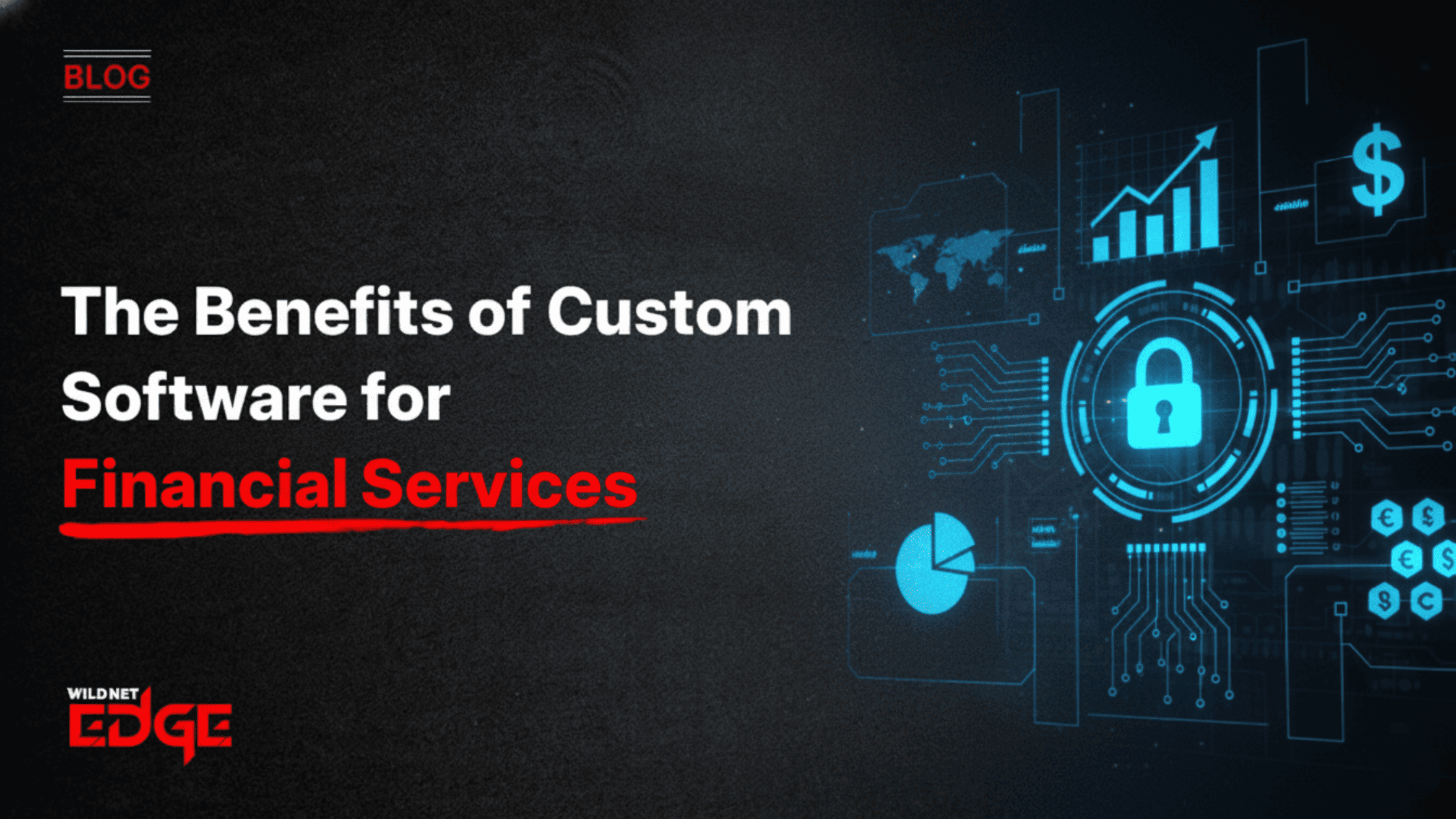TL;DR
This article details the strategic necessity of custom software for finance institutions aiming for a competitive edge. It explains that generic software often fails to meet the stringent security, compliance, and unique workflow demands of the financial services industry. The guide explores key benefits of bespoke financial software solutions, including enhanced security postures, guaranteed regulatory compliance adherence, perfectly tailored process automation, and seamless integration capabilities. It emphasizes that while the initial investment is higher, custom software provides superior long-term ROI through increased efficiency, reduced risk, and the ability to offer innovative, differentiated services, crucial for areas like banking automation.
The financial services industry operates under immense pressure. Strict regulations, evolving customer expectations, sophisticated security threats, and the need for absolute accuracy demand technology solutions that are not just functional but flawless. While off-the-shelf software might seem adequate for some industries, the unique complexities of finance often necessitate a more tailored approach. Investing in custom software for finance is frequently the most strategic path to achieving operational excellence, robust security, and a lasting competitive advantage.
What is Custom Software for Finance?
Custom software for finance refers to applications designed and built specifically to address the unique operational workflows, regulatory requirements, and strategic goals of a particular financial institution (bank, credit union, insurance company, investment firm, FinTech startup). Unlike generic platforms, these financial software solutions are proprietary assets, crafted precisely for the organization’s needs.
This could range from a bespoke core banking module or a unique algorithmic trading platform to a specialized risk management system or a tailored customer onboarding portal. The defining factor is that the software is not a one-size-fits-all product but a solution engineered for a specific purpose within the complex financial ecosystem.
Limitations of Off-the-Shelf Software in Finance
The usage of generic software in the financial sector frequently returns more issues than it resolves:
- Compliance Gaps: Off-the-shelf products might not cover entirely the specific, nuanced regulatory requirements (e.g., specific reporting formats, complex audit trails).
- Security Concerns: Although vendors are securing their platforms, a generic codebase shared by many institutions can be a bigger target for attackers. Custom software provides a smaller and unique attack surface.
- Workflow Inefficiencies: Standardizing unique financial processes (like complex loan underwriting or specialized portfolio management) into a single workflow results in inefficiencies and workarounds being created.
- Integration Nightmares: Making generic software work smoothly with legacy core banking systems, specialized data feeds, or third-party financial APIs can be extremely difficult and expensive.
- Lack of Differentiation: Using the same tools as competitors makes it hard to provide distinctive digital services or to gain the upper hand through proprietary analytics.
The Strategic Benefits of Custom Financial Software Solutions
Investing in bespoke software development provides powerful, long-term advantages tailored to the financial industry’s demands.
Enhanced Security and Risk Management
Security is paramount in finance. A custom application allows you to implement security protocols and architectures specifically designed for your risk profile and data sensitivity. You have complete control over access controls, encryption methods, and audit logging, enabling a more robust security posture than often possible with generic tools.
Guaranteed Regulatory Compliance
Custom software for finance can be built from the ground up to meet specific regulatory requirements e.g., KYC, AML, CCAR, Basel III, GDPR. Features like immutable audit trails, granular reporting capabilities, and specific data handling rules can be embedded directly into the software’s logic, ensuring ongoing compliance and simplifying audits.
Tailored Workflows for Peak Efficiency
Financial processes are often complex and unique. Custom software is designed to mirror and optimize these specific workflows. Whether it’s automating loan origination, streamlining trade reconciliation, or managing complex derivatives, the software works exactly the way your expert teams need it to, maximizing productivity and minimizing errors. This precise banking automation is a key benefit. Engaging Custom Software Development Services ensures this perfect fit.
Seamless Integration with Core Systems
Financial institutions rely on a complex web of existing systems. Custom software can be built with specific APIs designed to integrate flawlessly with your core banking platforms, trading systems, market data feeds, and CRM, creating a unified ecosystem and eliminating data silos.
Key Considerations for Your Custom Build
Starting a customized project involves a lot of planning. Here is a list expertise that you need:
- Deep Domain Expertise: Opt for a development partner that has in-depth knowledge of the financial services sector, particularly in areas like security and compliance.
- Scalable Architecture: Create the system in such a way that it will be able to accommodate future increases in transaction volume, data storage and user load.
- Rigorous Testing: Applying testing methods that cover every aspect, such as security penetration testing, performance load testing and functional QA, is needed.
Custom Financial Software in Action: Case Studies
Case Study 1: A Bank’s Automated Lending Platform
- Challenge: A regional bank’s commercial lending process was slow and manual, involving numerous spreadsheets and disconnected systems. This led to long turnaround times and a poor customer experience.
- Our Solution: We built a custom software for finance platform that automated the entire lending workflow, from application intake and document management to underwriting analysis (using integrated AI for initial risk assessment) and final approval routing. This project helped them Automate Business Processes critical to their operations.
- Result: The bank reduced its average loan processing time by 60%. The system improved data accuracy, enhanced compliance checks, and provided management with real-time visibility into the lending pipeline.
Case Study 2: An Investment Firm’s Portfolio Management System
- Challenge: An independent investment advisory firm needed a proprietary platform to manage complex client portfolios, execute unique trading strategies, and generate highly customized performance reports. No off-the-shelf solution met their specific requirements.
- Our Solution: We developed a bespoke portfolio management system. The platform integrated with multiple market data feeds, allowed advisors to model complex strategies, and featured a flexible reporting engine capable of generating tailored client statements. Crafting such tailored platforms requires deep expertise in creating custom ERP Software Solutions.
- Result: The custom platform became the firm’s core competitive advantage. It enabled them to offer highly differentiated services to their clients and streamline their internal operations, supporting significant growth in assets under management.
Our Technology Stack for FinTech
We prioritize security, performance, and compliance in our technology choices.
- Backend: .NET, Java, Python (with a focus on security and performance)
- Frontend: Angular, React
- Databases: Microsoft SQL Server, PostgreSQL, Oracle (with robust security configurations)
- Cloud Platforms: Microsoft Azure, AWS (with compliance certifications like PCI DSS, SOC 2)
- Integration: Secure APIs, Financial Data Feeds (e.g., Bloomberg API), FIX Protocol
- Security: Advanced Encryption Standards, MFA, Secure Coding Practices (OWASP)
Conclusion
Financial institutions, which are striving for efficiency, security, and differentiation, often make a strategic investment in custom software for finance. Although ready-made products meet a certain need, the possibility of developing financial software solutions that perfectly fit the customer’s unique processes and strict compliance requirements delivers a long-term value that is hard to match. This customized method makes real banking automation and innovation possible.
Ready to build a financial platform that provides a lasting competitive advantage? At Wildnet Edge, our AI-first approach ensures we deliver intelligent, secure, and scalable solutions. We partner with financial institutions to transform their operations and create next-generation digital experiences.
FAQs
There are risks, primarily around project execution (budget, timeline). However, these are mitigated by choosing an experienced development partner with a mature process. The risk of using ill-fitting COTS software (inefficiency, compliance gaps, lack of differentiation) can arguably be greater for a financial institution’s long-term strategy.
While large vendors invest heavily in security, their widespread use makes them a larger target. A vulnerability found in a popular platform affects everyone using it. A custom application has a unique codebase, making it a much smaller and less understood target for attackers. You also have full control over implementing highly specific security controls.
Timelines vary greatly based on complexity. A departmental tool might take 6-9 months, while a core system modernization or a complex trading platform could take 18-36 months or longer, typically delivered in phases.
This requires an ongoing partnership. Your development partner should follow secure coding for enterprises and stay abreast of regulatory changes. A flexible architecture allows for easier updates, and regular compliance audits should be part of your maintenance plan.
Yes, integration is a primary reason to choose custom development. Experienced developers can build secure APIs and middleware to connect your new custom application seamlessly with legacy core banking systems, even older mainframe environments.
A good development partner will include comprehensive training and documentation as part of the project. Involving key users throughout the design and testing phases (“train the trainer” model) is also highly effective for driving adoption.
The first step is a thorough discovery and feasibility study. Work with a potential partner to deeply analyze the business problem, map the required workflows, assess the limitations of existing solutions, and create a high-level technical proposal and business case, including projected ROI.

Nitin Agarwal is a veteran in custom software development. He is fascinated by how software can turn ideas into real-world solutions. With extensive experience designing scalable and efficient systems, he focuses on creating software that delivers tangible results. Nitin enjoys exploring emerging technologies, taking on challenging projects, and mentoring teams to bring ideas to life. He believes that good software is not just about code; it’s about understanding problems and creating value for users. For him, great software combines thoughtful design, clever engineering, and a clear understanding of the problems it’s meant to solve.
 sales@wildnetedge.com
sales@wildnetedge.com +1 (212) 901 8616
+1 (212) 901 8616 +1 (437) 225-7733
+1 (437) 225-7733































